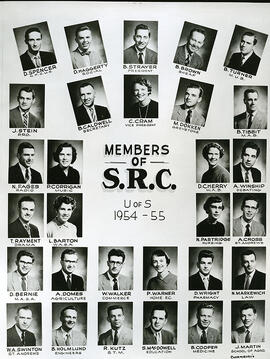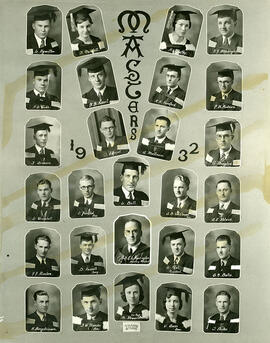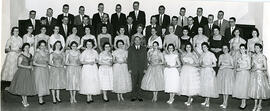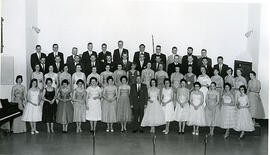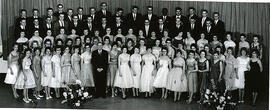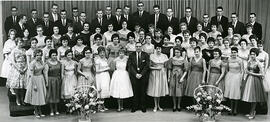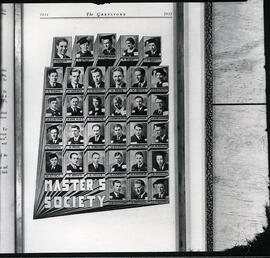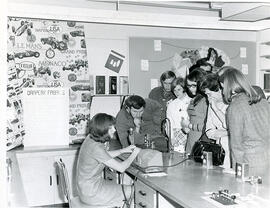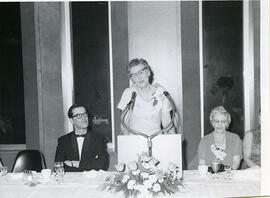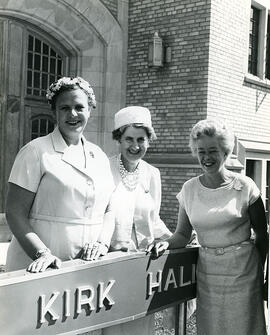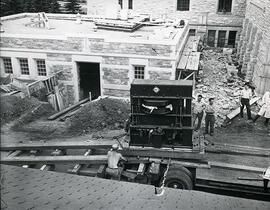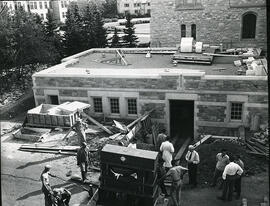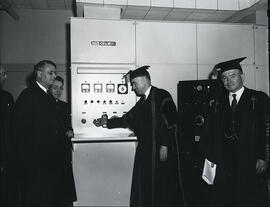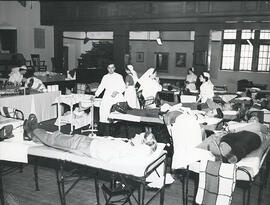Students' Representative Council
- A-3472
- Stuk
- 1954-1955
Individual photographs of SRC members grouped. Names: D. Spencer, D. Haggerty, Barry Strayer, B. Brown, B. Turner, J. Stein, B. Caldwell, Corinne Cram, M. Dokken, B. Tibbit, N. Fages, P. Corrigan, D. Cherry, A. Winship, T. Rayment, L. Barton, N. Partridge, A. Cross, D. Bernie, A. Domes, W. Walker, P. Warner, D. Wright, N. Markewich, W.A. Swinton, Blaine Holmlund, R. Kutz, Stirling Macdowell, B. Cooper, J. Martin.

